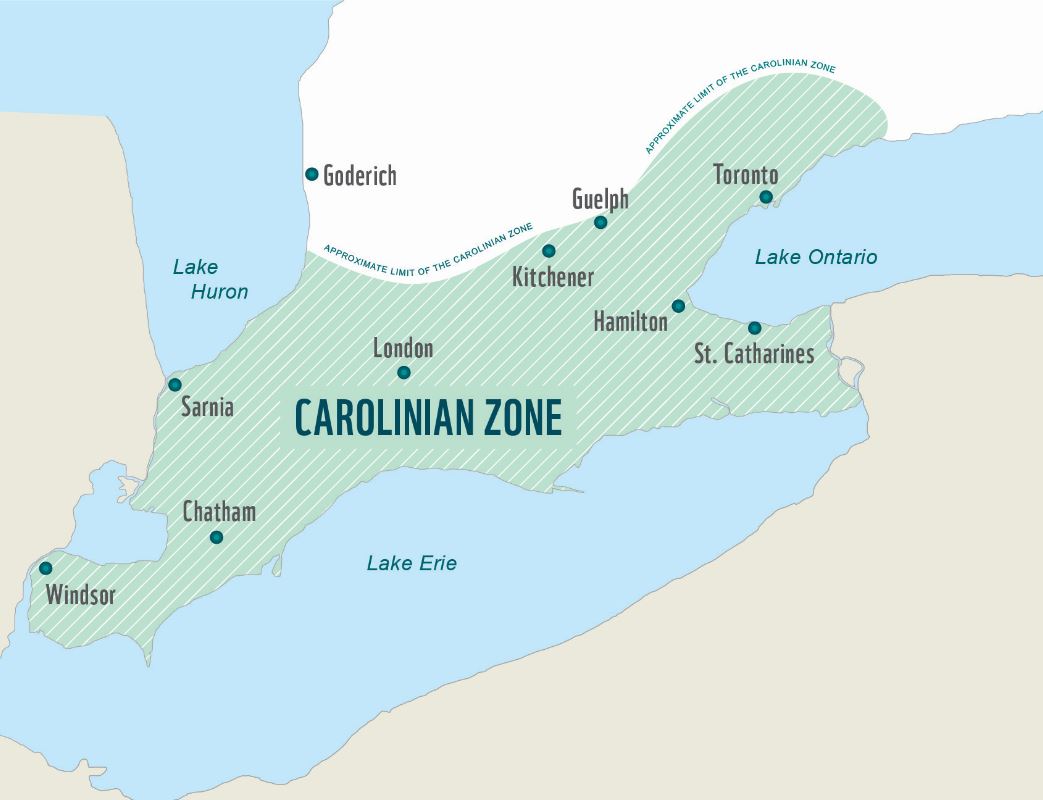New hope for at-risk wildlife with launch of habitat gardening program
TORONTO, June 23, 2017 /CNW/ – A new native-species gardening program launches today, aimed to help Southern Ontario residents and businesses transform their properties into vital habitat for wildlife that once thrived in the ecologically unique Carolinian Zone.
In the Zone, a collaboration of WWF-Canada and Carolinian Canada, will help restore lost habitat in one of the most biologically diverse and threatened regions of Canada.
Native plants are essential for food and shelter for monarch butterflies, frogs, turtles, owls, bees and other native wildlife, especially as pressures from climate change and human development intensify. By filling in habitat gaps, private green spaces growing native plants can play a critical role in restoring habitat at the backyard, neighbourhood and ecosystem level.
About In the Zone
Makes it easy for wildlife lovers to be part of the solution with:
- In the Zone Tracker, an online citizen-science tool that lets gardeners measure their individual impact while making a valuable contribution to our understanding of biodiversity across the Carolinian Zone.
- Comprehensive gardening guides for wildflower, woodland and wetland habitats.
- Access to gardening and wildlife experts to answer questions about which native plants to grow to benefit wildlife.
About the Carolinian Zone
- Makes up less than one-quarter of one per cent of Canada’s landmass and is home to more than 25 per cent of Canada’s population.
- Unique biologically rich ecosystems include old growth forests, freshwater wetlands, prairie grassland and oak savannah.
- Home to one-third of Canada’s at-risk plants and animals, including:
- Pollinators: Monarch butterfly and many of Canada’s 800 bee species are in decline due to factors such as habitat loss, pesticide use and climate change.
- Turtles: Seven of Ontario’s eight freshwater turtle species are at-risk. Habitat loss and fragmentation have played a major role in their decline, as has the illegal pet trade.
- Birds: At least 30 of the more than 200 bird species that breed in the zone are at-risk, including the red-headed woodpecker and cerulean warbler.
- Amphibians: Habitat loss, degraded water quality and pesticides have played a role in the decline of Ontario’s amphibians, including the endangered Jefferson salamander and Fowler’s toad.
- Other wildlife at risk include the southern flying squirrel, eastern foxsnake and American badger.
Threats to Carolinian Zone biodiversity
Climate change, non-native species and weak natural heritage policies are diminishing habitat levels across the zone.
- Habitat loss:
- Natural habitat levels in the zone are at 16 per cent overall and must be doubled to meet federal guidelines for healthy ecosystems.
- Mature forests once covered 80 per cent of southern Ontario. Today, woodland cover is just 11 per cent overall and less than three per cent in some places.
- Wetlands covered almost 25 per cent of land, but now represent just five per cent.
- Less than two per cent of the region’s tallgrass prairie remains.
- The quality of remaining habitat is often poor due to invasive species, pollution and other human impacts.
- Habitat fragmentation: Habitat is degraded as it’s broken into smaller pieces.
- Loss of native plants: Pollinators, birds and other wildlife need native plants to thrive.
Sarah Winterton, WWF-Canada’s director of Nature Connected Communities, says:
“Biodiversity in the Carolinian Zone is under tremendous stress. While some problems seem too big for individuals to tackle, this isn’t one of them. Individuals – whether veteran green thumbs or trying their hand at gardening for the first time – have the power to make a difference.
If each of us makes a conscious choice to plant native species, we become part of the solution. What’s more, by tracking progress with the In the Zone Tracker, gardeners can be citizen scientists contributing to biodiversity research in this ecologically important region.”
Michelle Kanter, executive director of Carolinian Canada, says:
“We are on the cusp of major change in the Carolinian Zone – we can either allow our communities to continue to lose life, colour, diversity, frog and bird songs and resources like clean water that are critical to our survival, or we can each take small actions in our yards now to grow a greener, safer and healthier future for our grandchildren and their great grandchildren. The Carolinian Zone’s unique nature isn’t entirely lost. Together we can save it, one planter, one yard, one street, one neighbourhood at a time.”
To learn more about the program, visit InTheZoneGardens.ca.
The Carolinian Zone
About World Wildlife Fund Canada
WWF-Canada creates solutions to the environmental challenges that matter most for Canadians. We work in places that are unique and ecologically important, so that nature, wildlife and people thrive together. Because we are all wildlife. For more information, visit wwf.ca.
About Carolinian Canada
Carolinian Canada’s network protects an incredible array of rare wildlife and natural treasures from Toronto to Windsor. The charity connects diverse Canadians to healthy landscapes and wild places of Canada’s deep south. Explore Carolinian Canada. You can’t live without it.
caroliniancanada.ca
SOURCE WWF-Canada 
For further information: Emily Vandermeer, communications specialist, [email protected], w: 416-489-4567 ext. 7298, c: 519-616-1556


